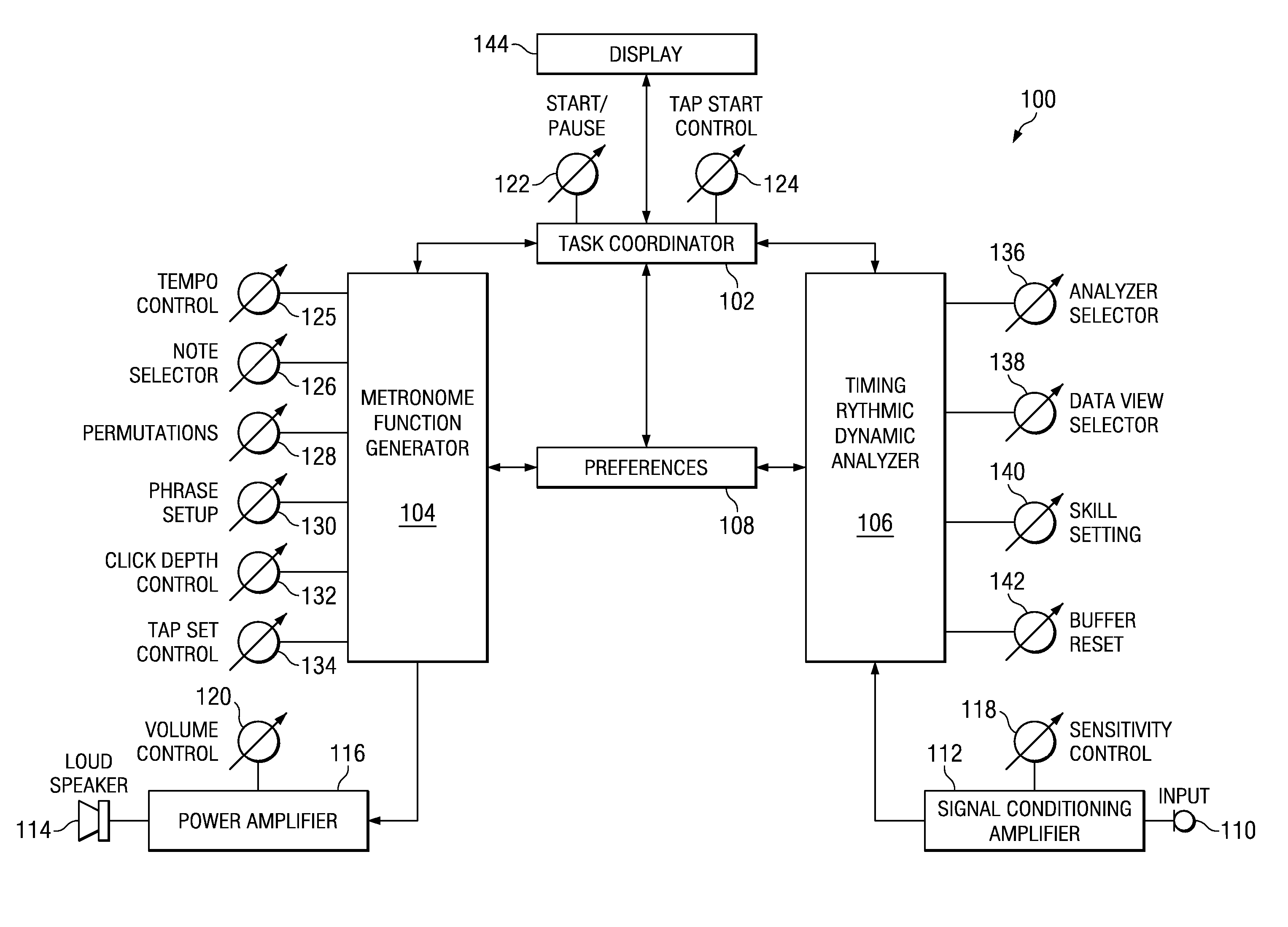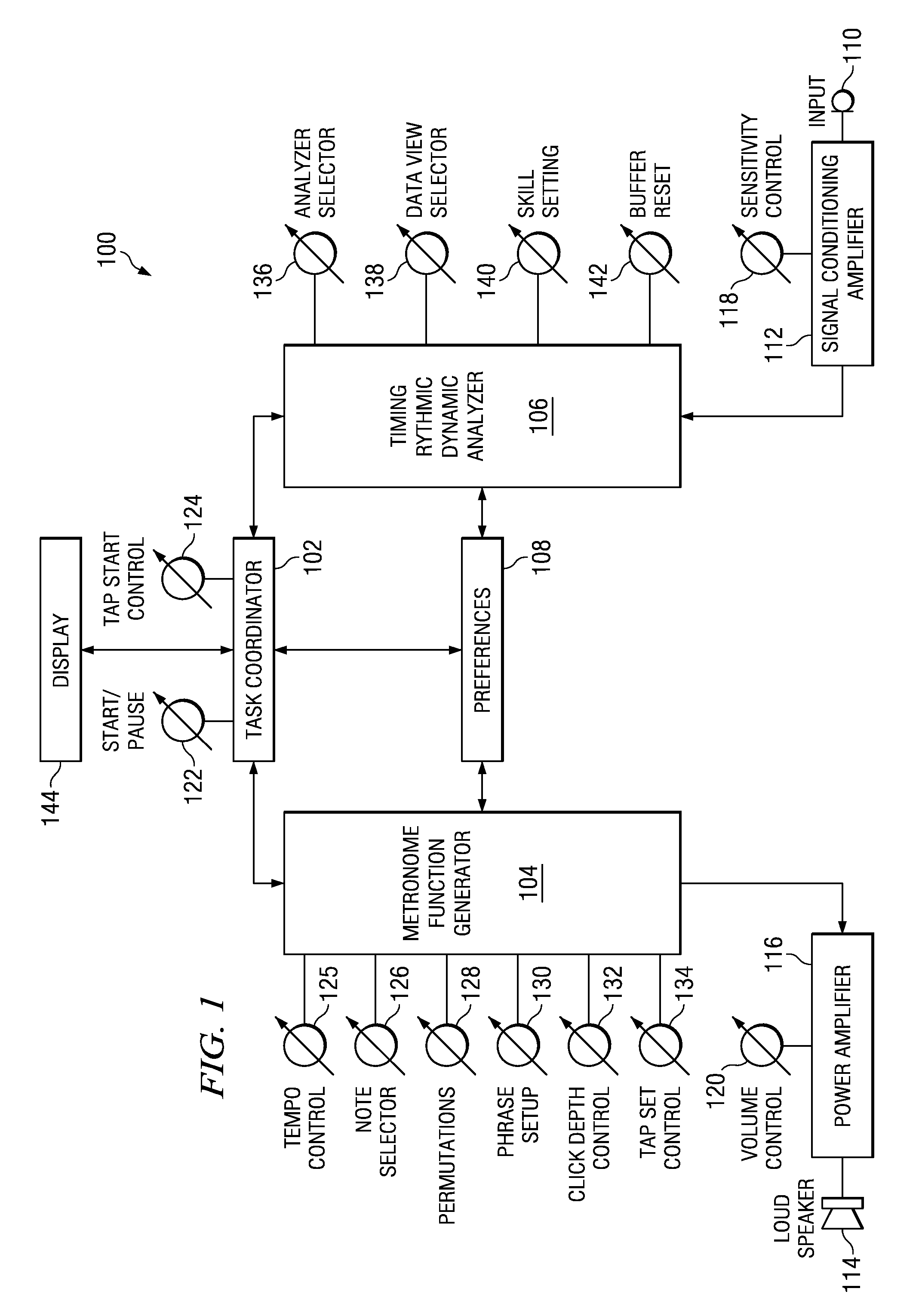Method of and system for timing training
a timing training and timing technology, applied in the direction of pre-selected time interval producing apparatus, instruments, music, etc., can solve the problems of no device available whose purpose is to measure, compounding the difficulty of determining which of the two sounds occurs first, and difficult to perform dual tasks
- Summary
- Abstract
- Description
- Claims
- Application Information
AI Technical Summary
Benefits of technology
Problems solved by technology
Method used
Image
Examples
Embodiment Construction
[0027]A system in accordance with principles of the invention enables a user to execute groupings of sounds (e.g., musical notes) and to visually determine changes occurring in dynamic level as well as where in time the sounds occurred relative to each other and relative to an audible reference click sound. The system may be used for purposes of skills improvement and assessment. After setting a desired rhythm, a user may start rhythm playback and begin playing an instrument. The user's notes are detected and a real-time visual representation is created of the timing and dynamic data of sounds generated by the instrument being played.
[0028]In various embodiments of the invention, an electronic device divides a primary metronome beat into multiple time sub-windows. A musical rhythm may be programmed into the electronic device, which generates a series of click sounds and visual indicators (e.g., flashing lights) relating to the programmed rhythm, which visual indicators may be used a...
PUM
 Login to View More
Login to View More Abstract
Description
Claims
Application Information
 Login to View More
Login to View More - R&D
- Intellectual Property
- Life Sciences
- Materials
- Tech Scout
- Unparalleled Data Quality
- Higher Quality Content
- 60% Fewer Hallucinations
Browse by: Latest US Patents, China's latest patents, Technical Efficacy Thesaurus, Application Domain, Technology Topic, Popular Technical Reports.
© 2025 PatSnap. All rights reserved.Legal|Privacy policy|Modern Slavery Act Transparency Statement|Sitemap|About US| Contact US: help@patsnap.com



